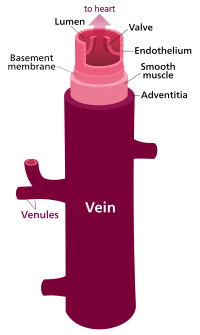
Photo from wikipedia
To understand fundamental mechanisms associated with post-flight orthostatic intolerance we investigated the interaction between the cardiovascular and postural functions before and after 60 days of head down bedrest (HDBR). Twenty… Click to show full abstract
To understand fundamental mechanisms associated with post-flight orthostatic intolerance we investigated the interaction between the cardiovascular and postural functions before and after 60 days of head down bedrest (HDBR). Twenty healthy young males (35.0 ± 1.7 years) were subjected to 60-day HDBR at 6˚ to simulate spaceflight-induced fluid shifts. A supine-to-stand (STS) test was conducted to evaluate cardio-postural control before and after (R) HDBR while an assessment of cardiovascular function was performed during HDBR. Beat-to-beat heart period, systolic blood pressure, and electromyography impulses were derived for wavelet transform coherence and causality analyses of the cardio-postural control and used to assess changes in the muscle-pump baroreflex. During quiet stand of the STS test, compared to baseline, heart rate was 50% higher on the day of exit from bedrest (R0) and 20% higher eight days later (R8). There was a 50% increase in deoxygenated hemoglobin on R0 and R8. Leg muscle activity reduced, and postural sway increased after HDBR. Causality of the muscle-pump baroreflex was reduced on R0 (0.73 ± 0.2) compared to baseline (0.87 ± 0.2) with complete recovery by R8. The muscle-pump baroreflex also had decreased gain and fraction time active following HDBR. Overall, our data show a significantly impaired muscle-pump baroreflex following bedrest.
Journal Title: Scientific Reports
Year Published: 2020
Link to full text (if available)
Share on Social Media: Sign Up to like & get
recommendations!